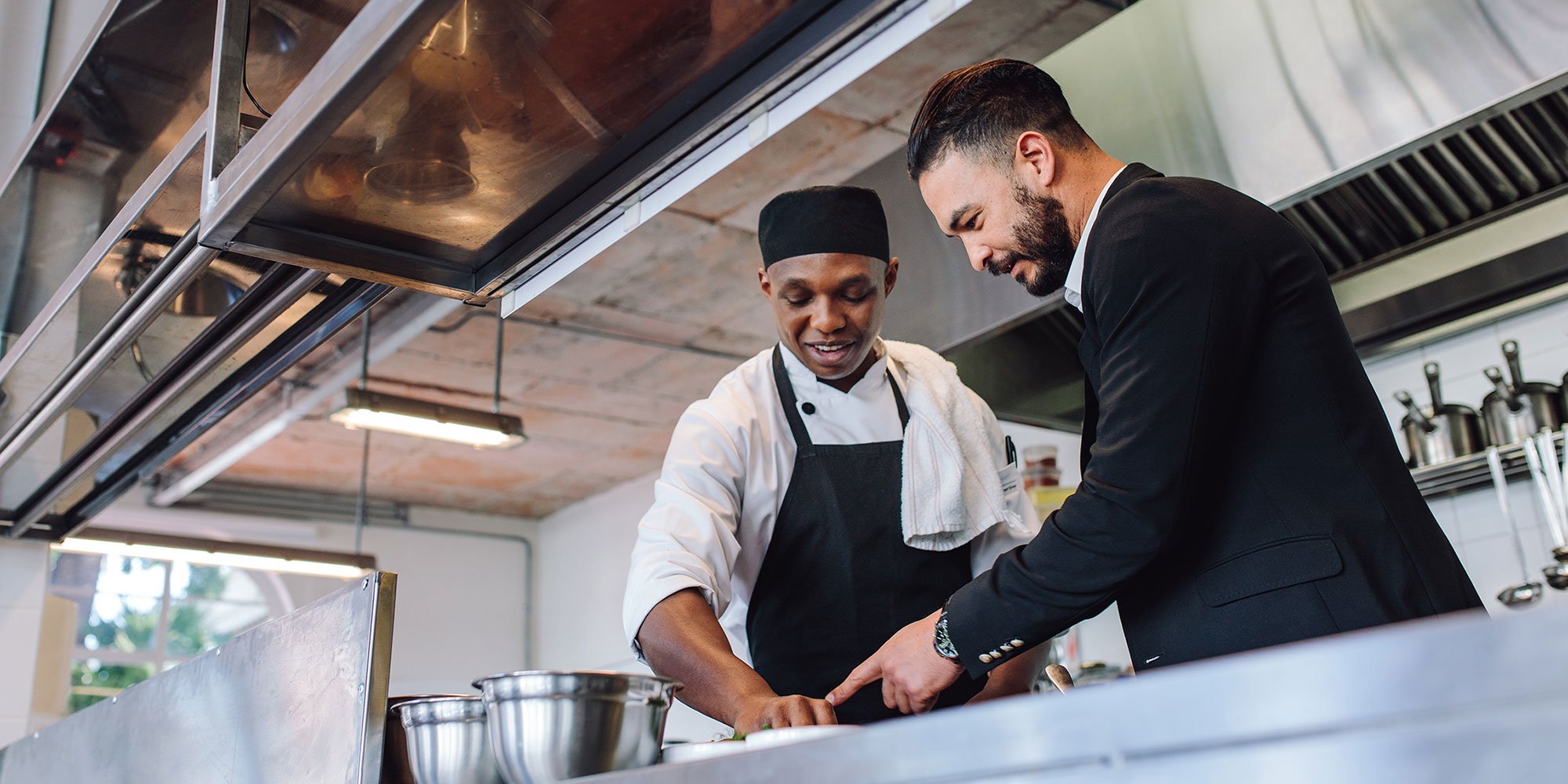
A Complete Guide to Restaurant Pricing (w/ Example Menu)
Maintaining a healthy profit margin is one of the biggest challenges in the restaurant business, particularly when food costs are high. Menu pricing is as much an art as it is a science, since it can impact how customers view your prices (and your restaurant) and whether they’ll return to dine with you again.
At Select Funding, we partner with restaurants to provide them with the working capital they need to meet their profit and growth goals. Any restaurant owner knows that menu pricing has an effect on their gross profit margin, so we’ve created this guide to restaurant pricing with an example menu to help you arrive at the right pricing for your restaurant.
How Does a Restaurant Make a Profit?
On a basic level, restaurants make money the same way any business achieves that goal: they sell more than they spend. Specifically, they spend less on overhead expenses, including payroll, rent, food costs, and so on, then their customers pay to dine in their establishments. The average profit margin in restaurants is between 3% and 5%, although of course some restaurants earn more than that.
If we break it down into specific categories, here are some of the ways that restaurants can increase their profits:
- Use Technology. Using restaurant management software can help to streamline operations, minimize expenses, and ensure accuracy on customer checks and payments. While the software itself might be an investment, using it has the potential to increase your profits over time.
- Buy in bulk. Negotiating better food prices when possible is one way to cut costs. Of course, buying in bulk won’t make sense unless you can use the food you buy before it expires or goes bad.
- Trim the menu. It’s common for restaurants to add menu items over time. A bloated menu can add to your overhead since you’ll need to have ingredients for all items on hand in case a diner orders them.
- Increase prices. When food costs increase, it may also be necessary to increase prices on your menu to keep up with inflation. The trick is to raise prices enough to make a profit without alienating customers.
- Upsell to customers. One of the best ways to increase profits is to increase the average amount a diner spends in your restaurant. Upselling things like appetizers, drinks, and desserts can help.
Ultimately, your menu is going to attract customers to your restaurant and your prices will play a key role in determining how they feel about their dining experience and whether they will return.
How Do You Calculate Food Cost Per Plate?
Plate costing is essential in every restaurant because it’s part of what helps restaurant owners maintain a healthy profit margin for their businesses. To cost a plate, you’ll need to calculate the cost of each item that goes into a dish and total the costs to arrive at a food cost per plate.
Before you calculate your costs, it’s necessary to standardize your recipes. You can’t arrive at an accurate cost per plate if one of your chefs is using two ounces of tomato in a recipe and another is using three ounces.
To illustrate the method, let’s look at a relatively simple dish: a bacon cheeseburger. The ingredients used might include the following:
- 6 ounces ground beef
- 1 brioche bun
- Two slices of cheddar cheese
- 1 ounce of lettuce
- 2 ounces of tomato
- 2 ounces of bacon
For this illustration, we’ve included only the major ingredients. However, you may want to build the cost of things like mayonnaise and mustard into your plate cost.
After you list the ingredients, you’ll need to calculate the cost for each one. For example, if you paid $900 for 80 pounds of ground beef, you would need to first calculate a cost per ounce and then, multiply it out to arrive at a cost for your burger. 80 pounds equals 1,280 ounces, so you would divide $900 by 1.280 to arrive at a cost of $0.70 per ounce. For a four-ounce burger, the cost for ground beef would be $2.80.
You would continue the calculations in this way for every component of the menu item to arrive at a total cost for the item. The total price calculation might look like this:
- 4 ounces ground beef: $2.80
- 1 brioche bun: $0.50
- Two slices of cheddar cheese: $0.75
- 1 ounce of lettuce: $0.11
- 2 ounces of tomato: $0.10
- 2 ounces of bacon: $0.30
Your total cost of food for your bacon cheeseburger would thus be $4.56 and you would build your menu price off of that amount.
How to Set Menu Prices
After you have calculated your food cost for each dish on your menu, you’ll need to set menu prices based on those costs and your ideal food cost percentage, which is based on the percentage of your total sales that are spent on food. In most restaurants, the ideal food cost percentage is somewhere between 25% and 35% of sales.
You should keep in mind that your ideal food cost percentage has a direct impact on your profits because you’ll need to pay your overhead expenses out of the money you make. In other words, the amount of your prices that doesn’t go to food costs will be spent on things like rent, taxes, payroll, and cleaning.
Looking at the example above, let’s say that your ideal food cost percentage was 30%. You would set the price for your bacon cheeseburger as follows.
Raw food cost of item / ideal food cost percentage, or $4.56/30%
This would mean that the menu price of your burger must be at least $15.50 to arrive at your ideal profit margin. Given that there’s also a psychology to menu prices, you may want to charge $15.99 or an even $16, depending on your restaurant and what you think will be most enticing to your customers.
Example Menu
Here’s a sample menu using a 30% ideal food cost percentage, showing both the calculated food cost, the price at the ideal food cost percentage, and the ultimate price that appears on the menu.
|
Menu Item |
Food Cost |
Price at Ideal Food Cost % |
Menu Price |
|
Jalapeño Poppers |
$1.50 |
$5.00 |
$5.00 |
|
Onion Rings |
$0.75 |
$2.50 |
$2.50 |
|
Caesar Salad |
$3.00 |
$10.00 |
$10.00 |
|
Bacon Cheeseburger |
$4.56 |
$15.20 |
$15.50 |
|
Fish Tacos |
$3.75 |
$12.50 |
$12.50 |
|
Brownie Sundae |
$2.60 |
$8.67 |
$9.00 |
Of course, depending on the costs of your other menu items, you might decide to scale these up a bit. You could sell those onion rings for $3.00 instead of $2.50 if you wanted to build a little extra profit into your menu.
Menu Pricing Strategies to Try
The simple menu pricing method we’ve described in the previous section is known as cost-plus pricing because it uses the cost of food as a jumping off point. Here are a few other menu pricing strategies to try.
Charm Pricing
Charm pricing is the reason you see so many items priced at amounts ending in .99. The human brain doesn’t view a price of $29.99 as being almost thirty dollars; instead, the most common interpretation is that it’s twenty-something dollars. Psychologically speaking, pricing this way leads to a perception of affordability that wouldn’t be there if you rounded up.
Relative Pricing
To use relative pricing, you’ll play higher-priced items next to lower-priced items. The trick is to make sure that the lower-priced item is a profit powerhouse. Customers may be more likely to go for the low-cost item but you’ll be the winner because you’ll be collecting a higher percentage of profit on what they order.
Omit Dollar Signs
Does putting a dollar sign in front of your prices remind people of how much money they’re spending? Some people believe it does, so one menu option to try–and something that’s often implemented by high-end restaurants–is omitting the dollar sign. When a menu item is listed as 25 instead of $25, people may be more willing to pay the price.
Bundle Pricing
Bundle pricing may be most often associated with fast food restaurants but it can be effective at casual dining restaurants, as well. An example would be listing a burger at its regular menu price and then saying that diners can add two sides for an additional $4.00. You could also allow them to add a drink or a dessert. Bundle pricing is common on kids’ menus, too, where kids may get an entree, a side, and a drink for a set price.
Portion Pricing
Portion pricing is a strategy that will allow you to cater to diners in groups or with varying appetites. A simple example would be including prices for both a half portion and a full portion on your menu. You could also serve a dish for two or four diners.
Maximize Your Restaurant Profits with Small Business Financing
Arriving at the right menu prices is necessary because it can spell the difference between success and failure for your restaurant. We hope this guide will help you think about how to set prices in your restaurant to meet your financial goals.
Do you need a cash infusion to take your restaurant business to the next level? Select Funding is here to help! Click here to learn about our restaurant financing options and begin the application process today.





